Every year, hundreds of tornadoes, hurricanes, and tropical storms affect the United States. Each of these severe weather events wreaks havoc along the way, causing damage to structures and trees. In worst-case scenarios, these storms can even cause loss of life.
Hurricanes and tornadoes have several similarities. As mentioned, both storms can cause major damage due to high wind speeds. Both of these dangerous weather events are caused by the rising of hot air into the atmosphere, leaving each one to have an “eye” formation in the middle. Additionally, hurricanes and tornadoes involve wind that swirls and rotates in the same direction. In the Northern Hemisphere, the wind in these storms rotates counterclockwise, while in the Southern Hemisphere, winds rotate clockwise.
However, even with these similarities, both weather events have several factors that set them apart. For example, in most cases, each type of storm occurs in different geographical regions of the country. Hurricanes typically occur over land near water, while tornadoes occur in areas where thunderstorms are likely. In the Midwest, a strip of land hundreds of miles wide runs north and south and is called “Tornado Alley,” affecting states like Nebraska, Oklahoma, Texas, and Kansas. In fact, tornadoes are one of the 20 things Kansas is known for.
To create this list of differences between tornadoes and hurricanes, 24/7 Tempo gathered information from several resources. These include the National Aeronautics and Space Administration (NASA), the American Geosciences Institute, and the National Oceanic and Atmospheric Administration (NOAA). Here are six ways to tell the difference between a tornado and a hurricane.
1. Location
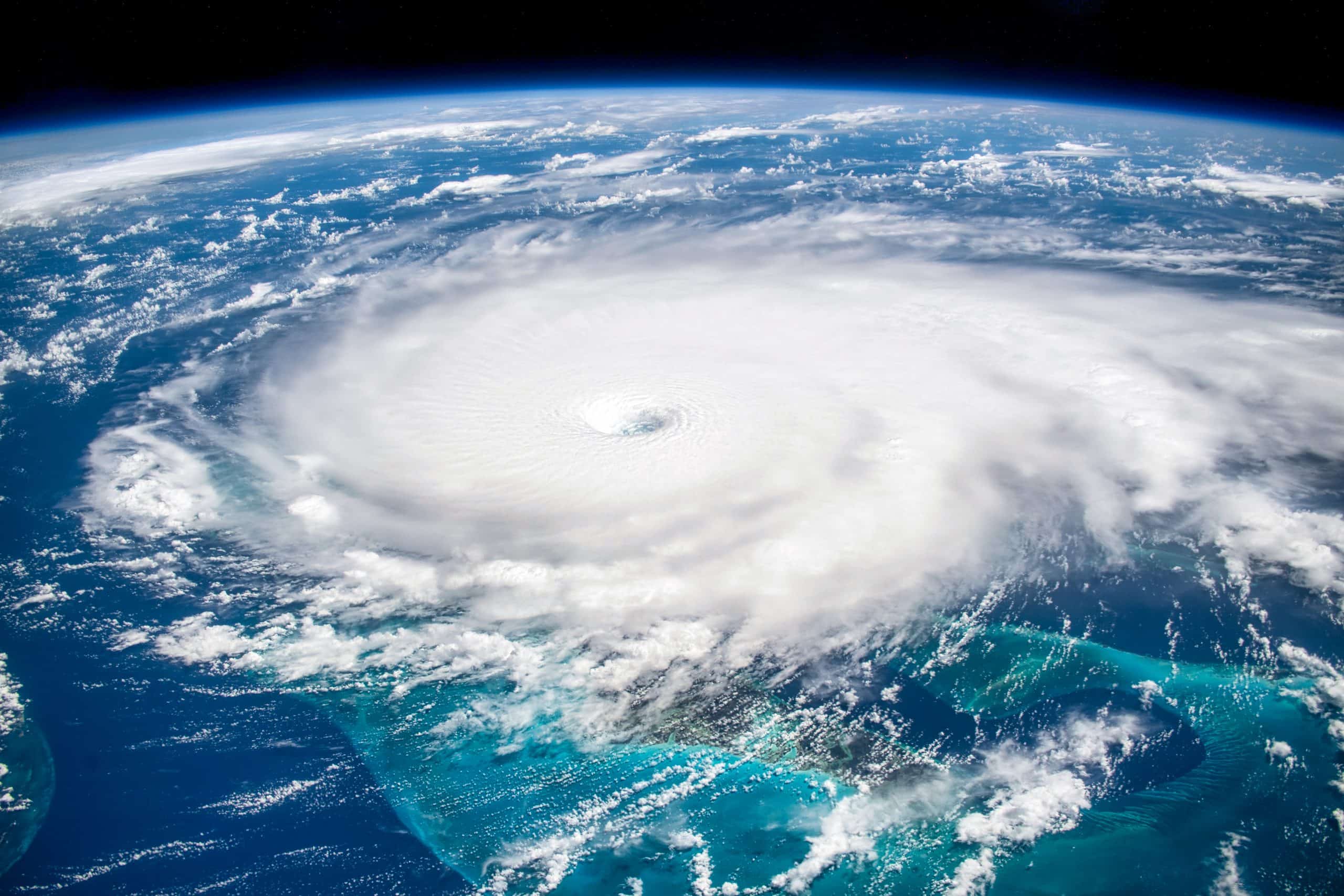
As mentioned above, hurricanes and tornadoes do not normally occur in the same geographic location. Hurricanes form over the warm and moist ocean, while tornadoes form over land due to a severe weather formation already in existence.
Formation over water or land
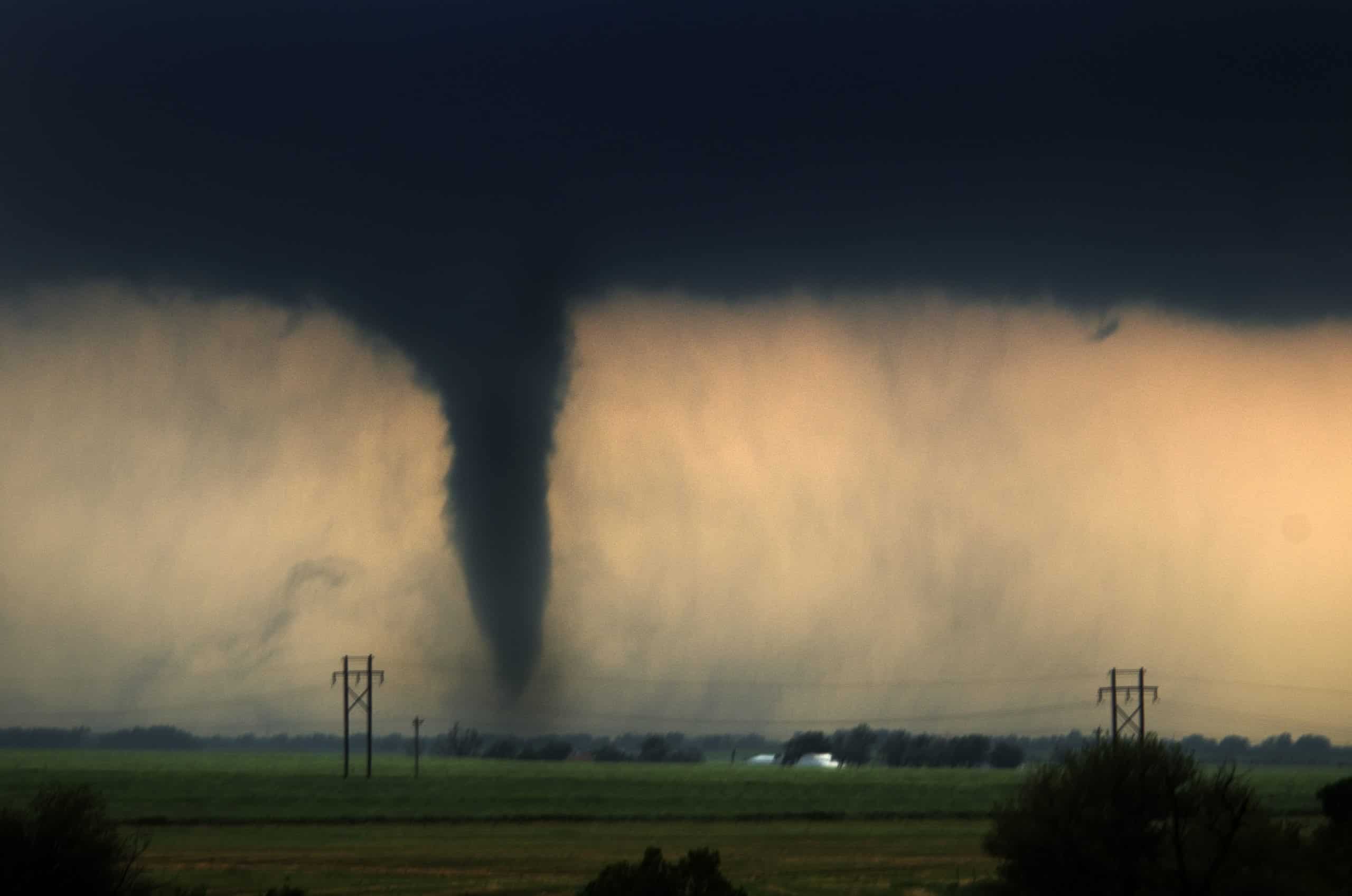
NOAA explains that hurricanes are typically fueled by a combination of a preexisting weather disturbance, warm water off the ocean’s surface, thunderstorm activity, and wind speed. These storms typically begin near the warm equator and begin to make their way across the water. Because hurricanes need warm water to form, the states that are located near the ocean are most commonly affected by these storms. Universal Property Insurance reports that Florida sees the most hurricanes each year. This state alone has seen 120 hurricanes from 1851 to 2018. Other states that see major hurricane damage include Texas, North and South Carolina, and Louisiana.
Tornadoes, on the other hand, typically form over land. These storms don’t require warm water, but conditions are likely when a large, unstable thunderstorm begins to soak up warm air from the ground which then mixes with cooler air in the atmosphere. As discussed, tornadoes are most common along the midwestern land-locked states, those these storms can happen anywhere an unstable atmosphere exists, even sometimes along the edge of a hurricane once it makes landfall.
2. Size
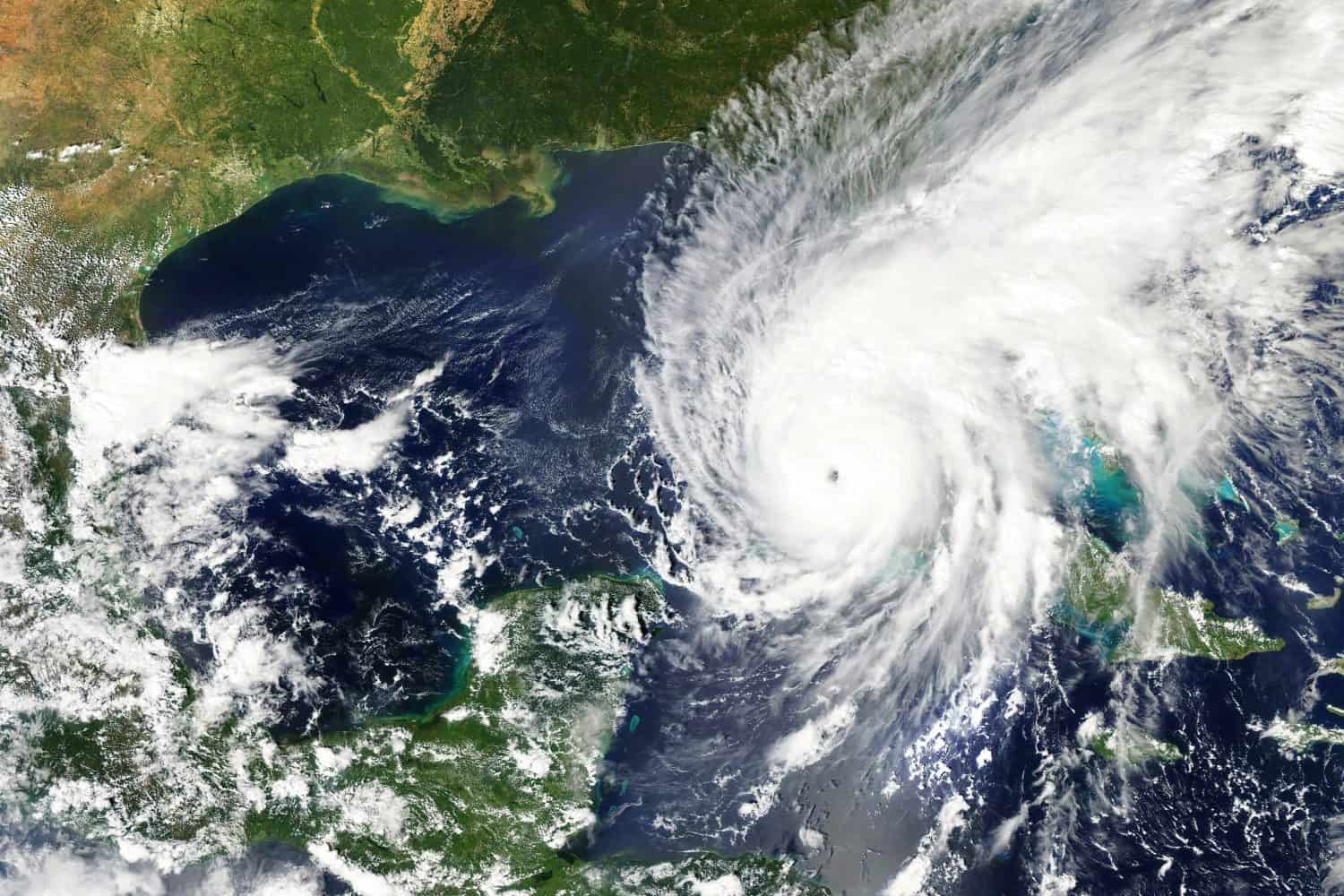
One crucial difference between tornadoes and hurricanes is the size of each storm. Hurricanes are massive storms, measuring up to 1,000 miles in diameter. These storms are large enough to be easily seen from space. Tornadoes, on the other hand, are much smaller, usually measuring less than 2 miles wide.
Measuring the storm
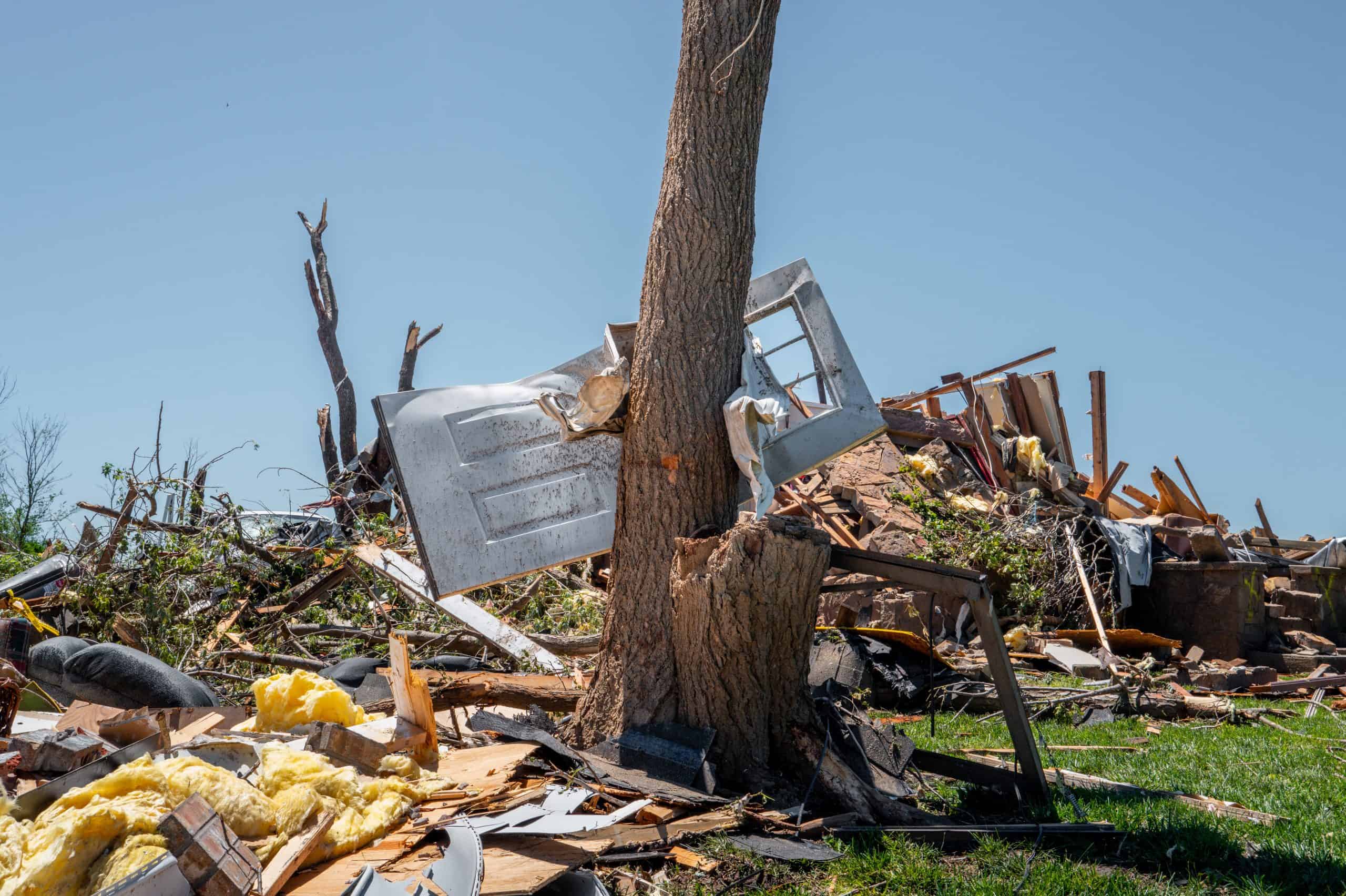
BARNSDALL, OKLAHOMA - MAY 07: A door is stuck in to a tree after being dismantled by a tornado on May 07, 2024 in Barnsdall, Oklahoma. Barnsdall, a small town with a population of approximately 1,000 people, was struck last night by an EF3 tornado. This latest destruction comes just one week after Oklahoma has been hit with a slew of deadly tornados. (Photo by Brandon Bell/Getty Images)
Due to the large size of a hurricane, these storms often cause widespread damage once they make landfall. While not every area is affected by the brunt of the storm or high winds, several areas around the storm will often see torrential rainfall that can cause flooding and other issues. Due to the much smaller size of tornadoes, however, damage from these storms is usually restricted to a very small area. While areas around the tornado may still experience severe thunderstorm damage like hail and intense rainfall, only the area where a tornado physically touches the ground is typically damaged.
3. Duration
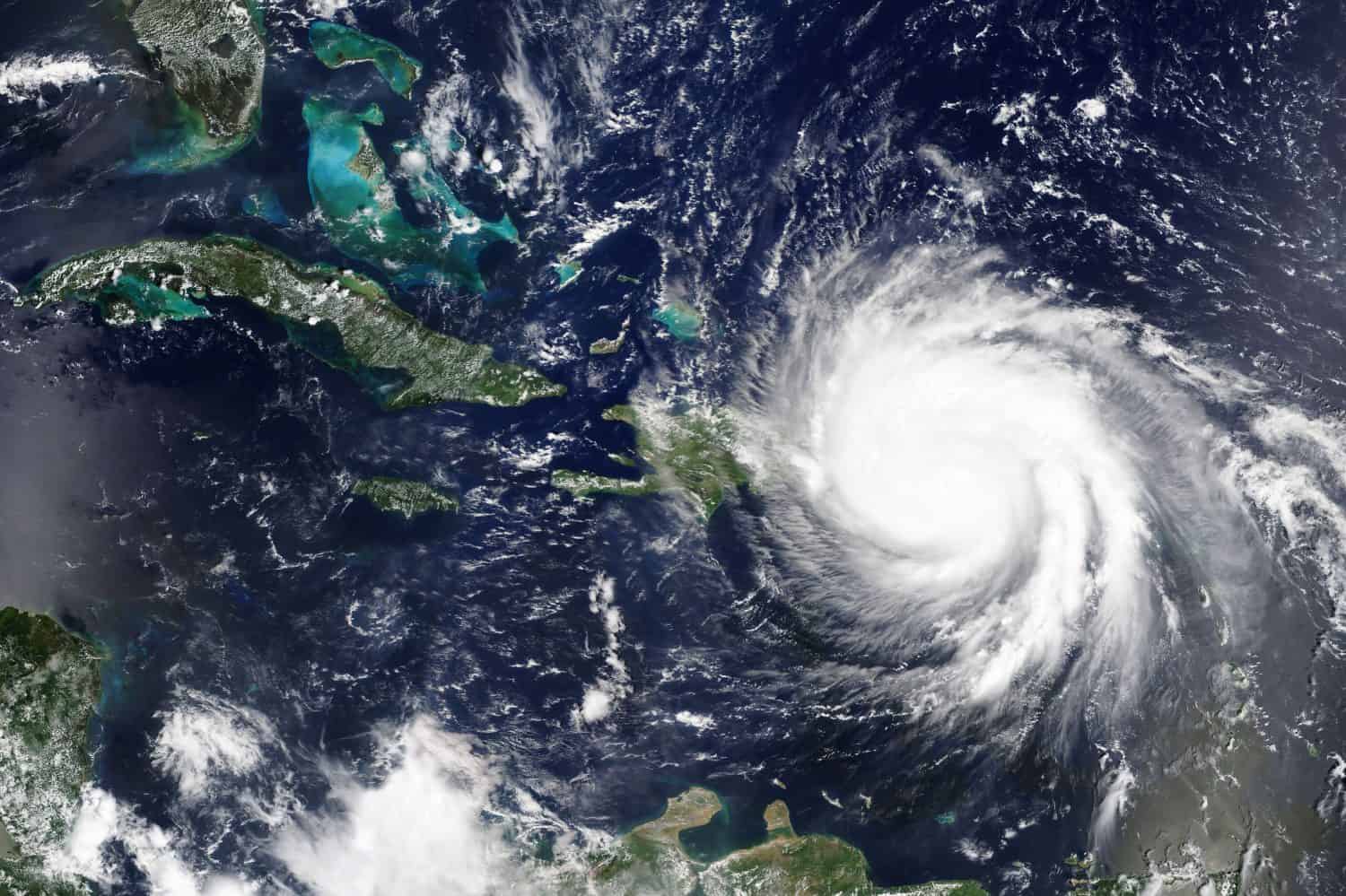 Source: lavizzara / Shutterstock.com
Source: lavizzara / Shutterstock.com

Because of a hurricane’s extremely large size, these storms can take anywhere from a few days to three full weeks before they finally fizzle out. Tornadoes are much smaller in size and tend to move faster as they occur within a line of severe storms. Tornadoes can also touch the ground for mere seconds before retracting back up into the clouds.
Days vs. hours
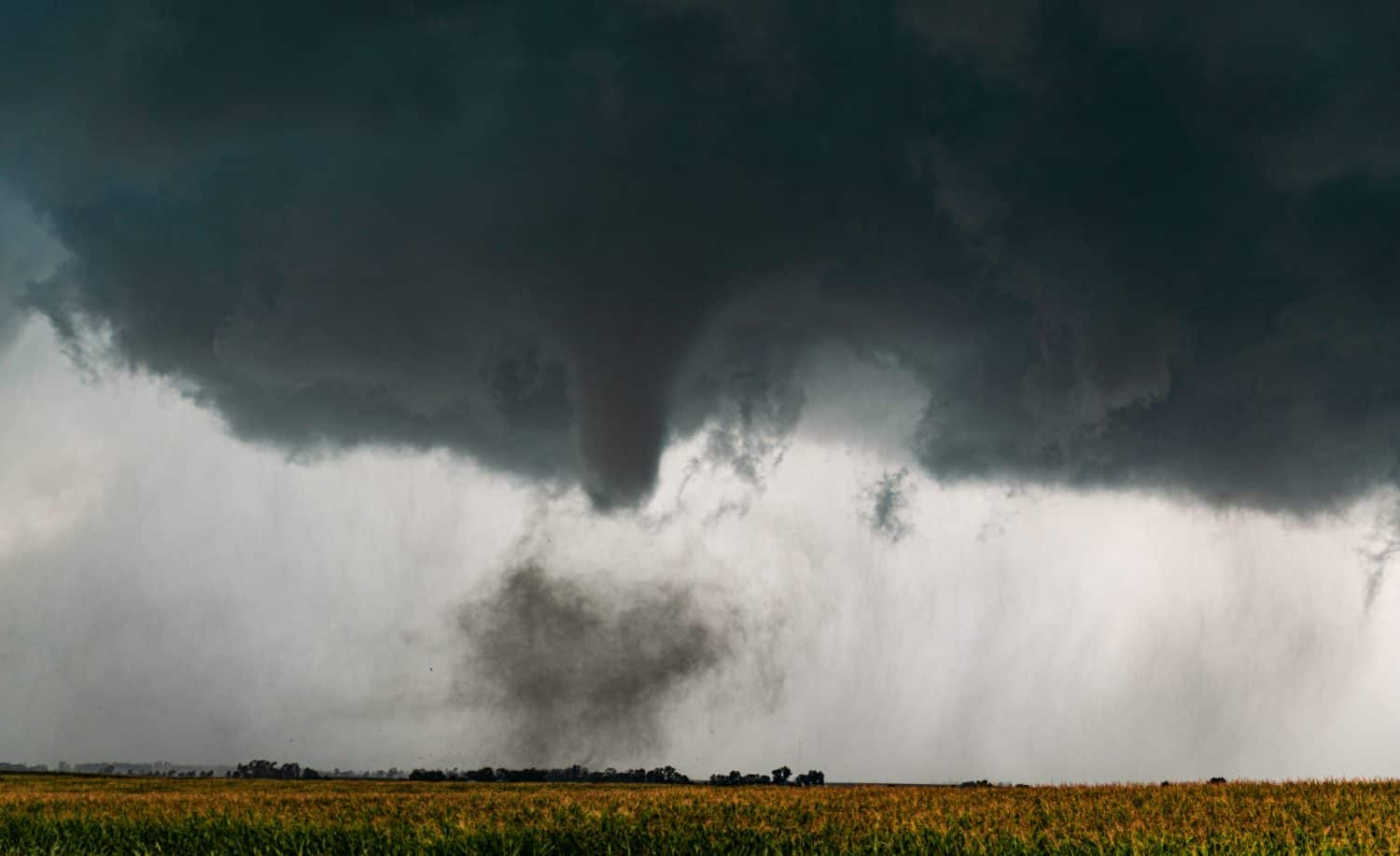
Hurricanes are powerful storms. Science Notes reports that they can release energy equivalent to 10,000 nuclear bombs. Because of the massive amount of energy that must be released when these storms make it to land, it can take several days for the storm to dissipate. This also gives the storm time to continue moving, meaning most hurricanes can affect more than one state in a geographic region before finally dying out. Tornadoes, however, are quick-moving and don’t last long. Atmospheric conditions must be just right to create a tornado, meaning these storms can come and go quickly.
4. Wind speed
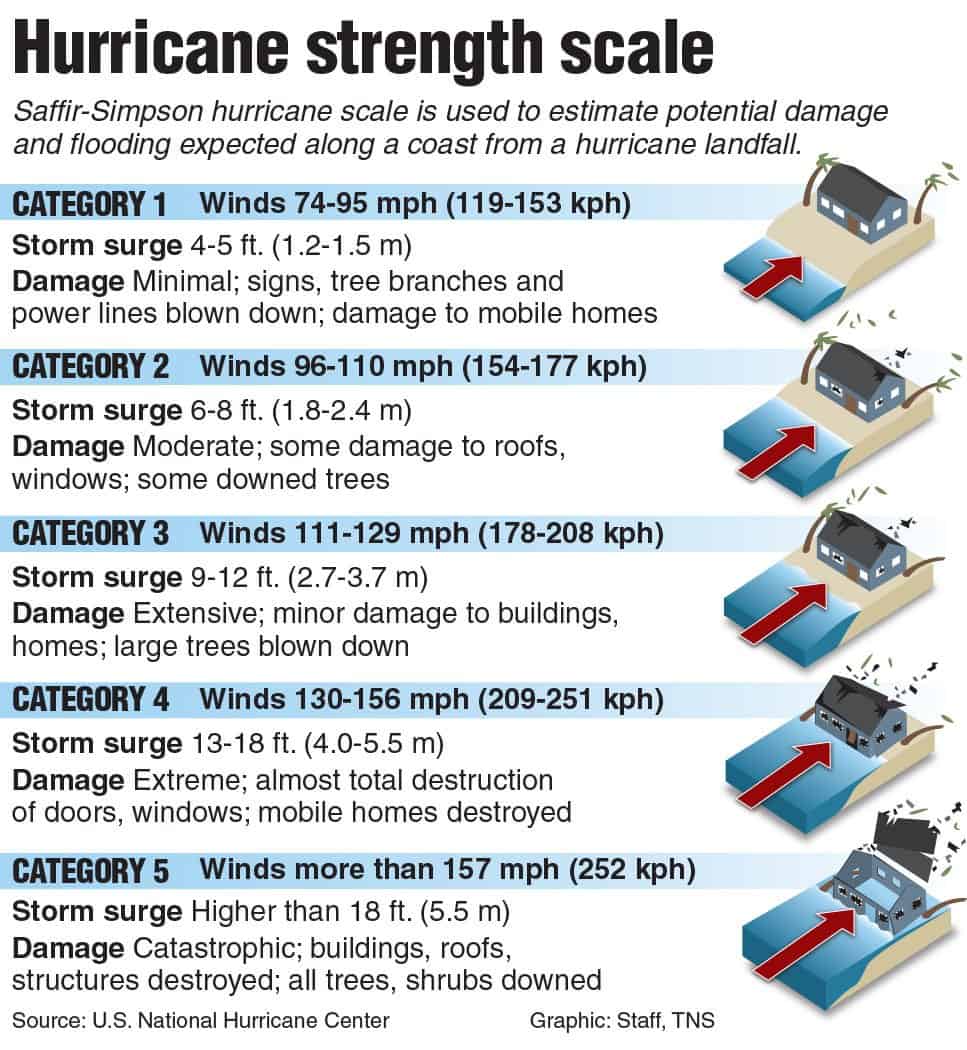
While hurricanes are larger in size, these storms tend to have a lower wind speed than tornadoes. Hurricanes, on average, have a wind speed of less than 180 miles per hour. Tornadoes, on the other hand, can reach up to 300 miles per hour. The wind speed of these storms is how meteorologists categorize them.
Hurricane scale vs. tornado scale
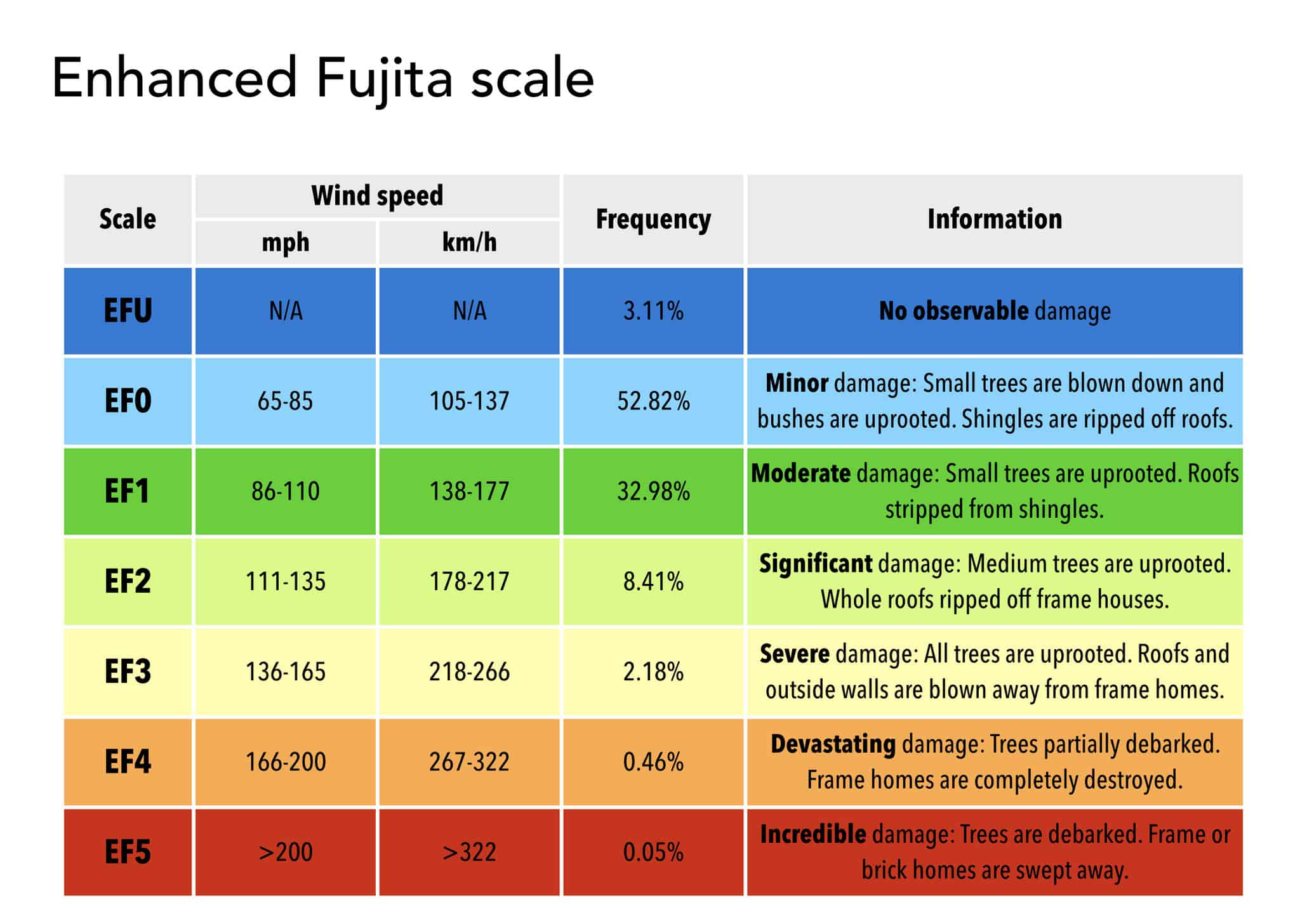
A 5-point scale is used to measure hurricanes. Called the Saffir-Simpson Hurricane Wind Scale, these storms are divided into five categories. A Category 1 hurricane will contain wind speeds of 74-95 miles per hour. A Category 2 will have wind speeds of 96-110 mph while a Category 3 will contain wind speeds from 111-129 mph. Category 4 hurricanes are marked by wind speeds of 130-156 mph, and Category 5 hurricanes are the most damaging with wind speeds reaching 157 mph or higher.
Tornadoes have much higher wind speeds and are measured on what’s called the Enhanced Fujita Scale. According to NOAA, an EF-0 tornado is very weak, only reaching wind speeds of 65-85 mph. EF-1 tornadoes have wind speeds of 86-110 mph while an EF-2 contains 111-135 mph wind speeds. EF-3 tornadoes have strong winds at 136-165 mph and EF-4 tornadoes clock in with 166-200 mph wind speeds. The most dangerous tornado is an EF-5 whose wind speeds over 200 mph.
5. Warning

Warning times for both of these storms vary greatly. Hurricanes are easy to see and track, giving people time to evacuate or prepare. Tornadoes, however, are quick, leaving meteorologists little time to warn the public before one touches the ground.
Days vs. minutes
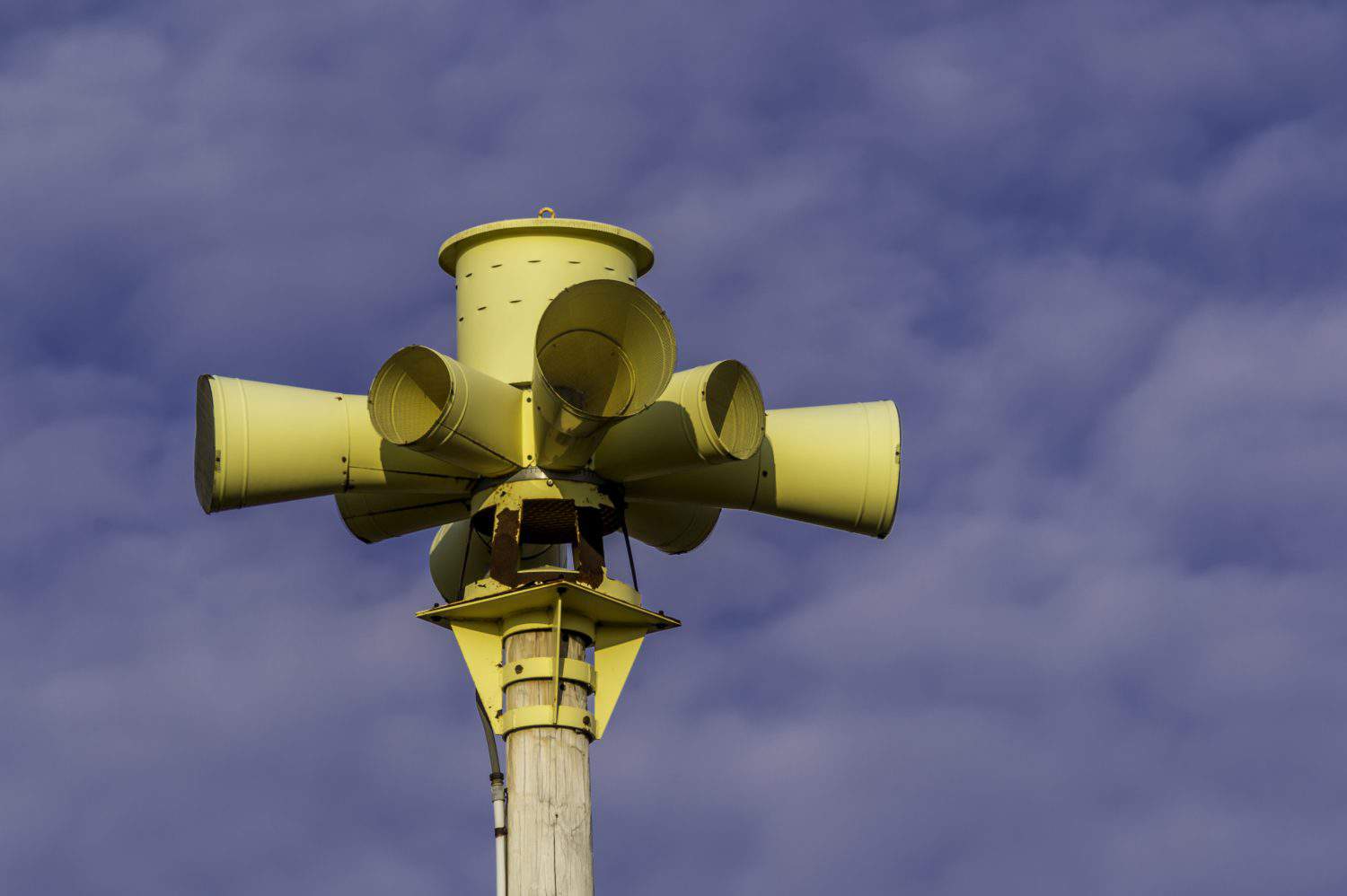
Due to advancements in weather technology, hurricanes can be seen and predicted much earlier than tornadoes. These storms also form over water, giving meteorologists time to watch, evaluate, and predict where the storm will go. A typical hurricane warning can come days before the storm makes landfall. Tornadoes are fast and furious. While meteorologists can predict when conditions are favorable for a tornado and call for a tornado watch, it’s difficult to predict when or if a tornado will actually form and touch the ground. Once a tornado is spotted, a warning is issued but it generally only gives people in the area a few moments to prepare.
6. Occurrences every year
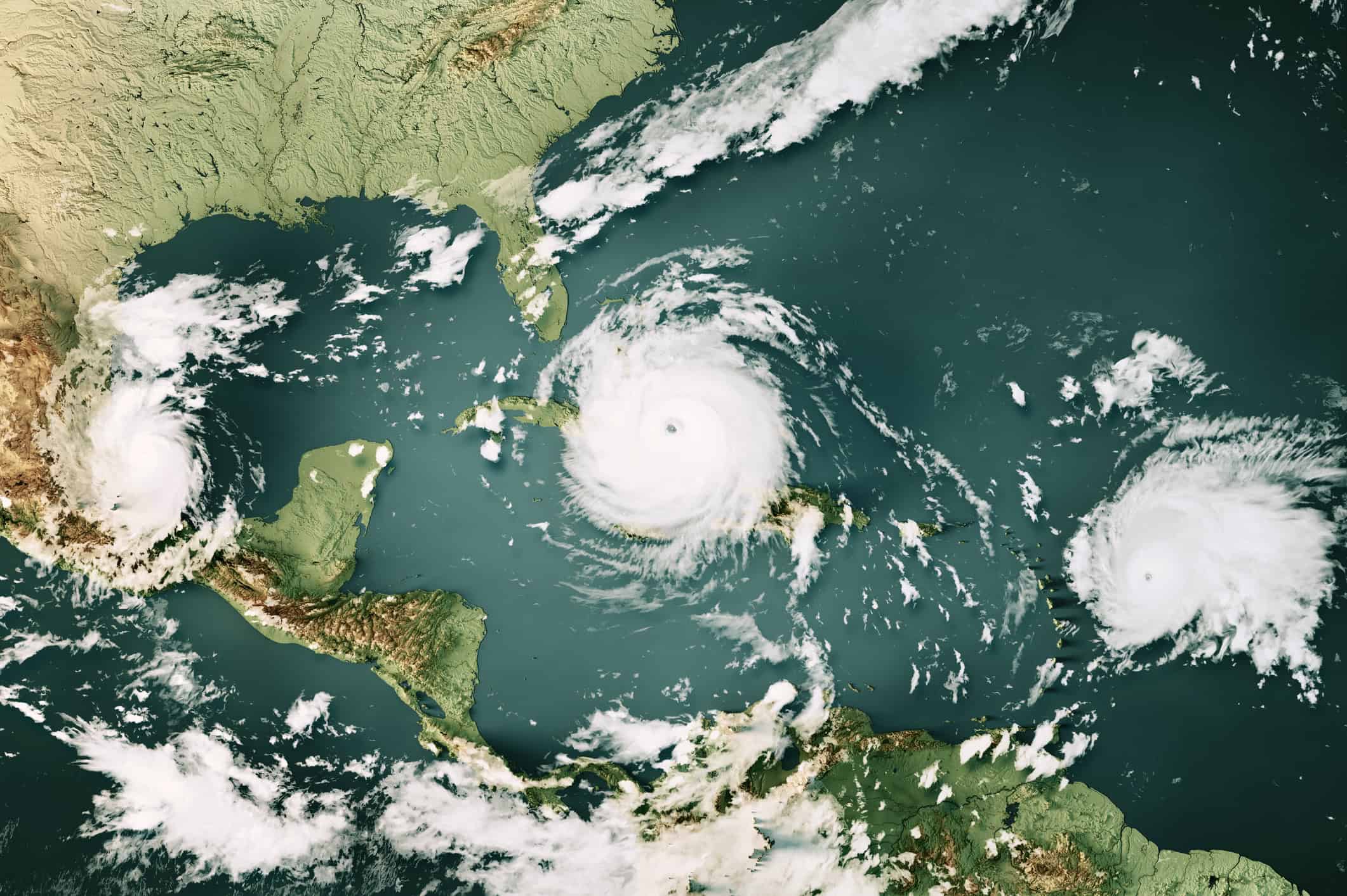
While hurricanes and tropical storms do make several appearances on land each year in the United States, they are far fewer in number compared to tornadoes. In general, about 10 hurricanes actually make landfall each year. Comparatively, about 1,200 tornadoes are recorded each year in the U.S., according to NOAA.
Are hurricanes or tornadoes more common?
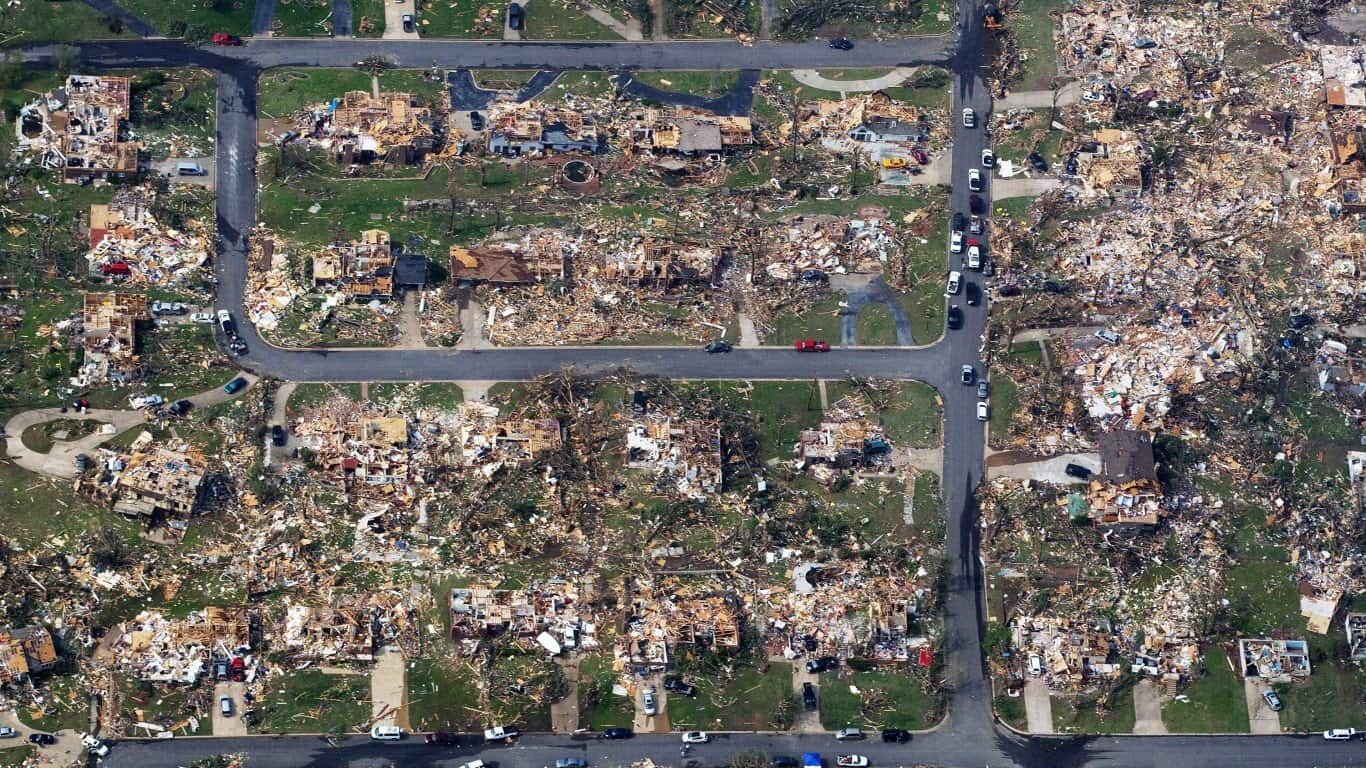
Judging by the numbers above, we can see tornadoes are more common than hurricanes. Additionally, hurricanes are generally only present during the warmer months of the year with most forming during summer and fall. The peak of hurricane season in the U.S. tends to land around August and September. Tornadoes, however, can happen at any time throughout the year. They are most common from March to June, but if conditions are warm and favorable enough, they can happen anywhere in the country at any time of year. (For more reading, here’s a look at the 25 U.S. cities most prepared to handle a natural disaster.)